This post may include affiliate links. Read the disclosure policy here. Thanks for the support!

Shahi paneer is a classic Indian dish that is popular around the world. The dish is a rich and creamy curry made with cottage cheese (paneer) and various spices. The dish is usually served with naan bread or rice, a favorite among vegetarians and non-vegetarians alike.
Shahi paneer is a bit on the sweeter side than its counterparts, paneer butter masala and paneer tikka masala.
I love making shahi paneer, and I love eating shahi paneer.
About the Dish
The Mughal era in India is when shahi paneer first appeared. From the 16th through the 19th century, India was dominated by the Mughal dynasty, which had a big impact on its history, culture, and food. The dish is claimed to have originated in the royal kitchens of the Mughal rulers since the Hindi term “shahi” signifies “royal.”
It is said that shahi paneer first appeared in the Awadhi area of northern India, which was renowned for its sumptuous and savory food. The Mughal rulers, who were renowned for their love of exquisite cuisine and opulent living, were known to like this meal.
The traditional method for making shahi paneer calls for simmering paneer cubes in a creamy sauce made of tomatoes and flavored with a variety of fragrant herbs and spices, including turmeric, cumin, and coriander. The sauce has a deep, nutty flavor and a creamy consistency since it is thickened with ground cashews and almonds.
Here’s how to make this shahi paneer recipe!
Utensils You’ll Need
- Deep Frying Pan: To make shahi paneer.
- Strainer: To strain the onion tomato gravy after grinding it.
- Big Tablespoon/Ladle: To saute and stir.
- Grinding Jar: To make onion tomato puree.
Ingredients Poured
Paneer: The dish’s primary element is paneer. Indian cuisine frequently uses paneer, a fresh, unaged cheese. It pairs nicely with hot curries and has a mellow, creamy flavor that is high in protein and calcium.
Milk: Milk is added for the consistency in the gravy and gives a creamy and rich flavor to the dish. And it is a great source of protein and calcium.
Tomatoes & Onions: Tomatoes are used to provide food acidity and flavor. They are cooked until they are soft and mushy after being coarsely chopped. Onions are utilized to provide the food with sweetness and texture. Before including the other ingredients, they are coarsely chopped and sautéed until golden brown.
Cashew Nuts: Cashews bind the gravy together and also it is a source of vitamins B and C.
Ginger-garlic Paste: Fresh ginger and garlic are coarsely mashed to create a paste and are added to enhance the dish’s flavor and aroma.
Spices: A variety of spices are used to flavor the dish. These include coriander powder, turmeric, red chili powder, and garam masala. Depending on the recipe, these spices are added to the dish in varying amounts.
Garnishes: Garnishes make the food look exquisite. Coriander leaves, fenugreek leaves, and a dollop of cream are added to the dish to give a more aromatic taste and appealing look.
Oil & Butter
Salt to Taste
How to Make Shahi Paneer
1. In a deep pan, heat the butter and add onions, tomatoes, and cashews and cook them till the smell and moisture of the tomatoes fade away. Add turmeric and red chilly powder and stir for 2 mins on low flame.
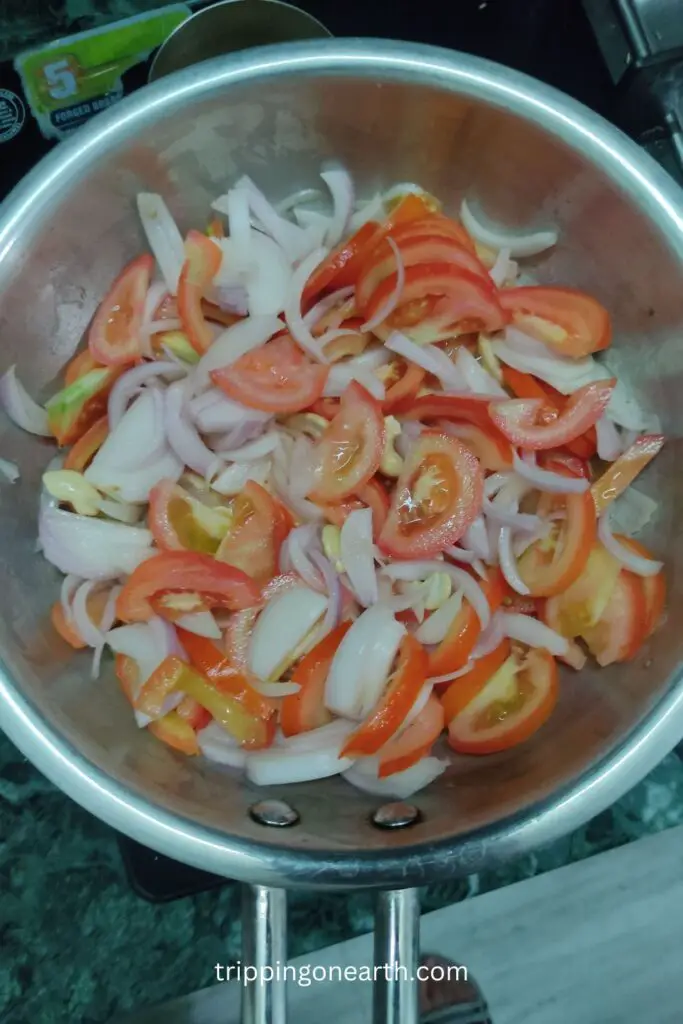
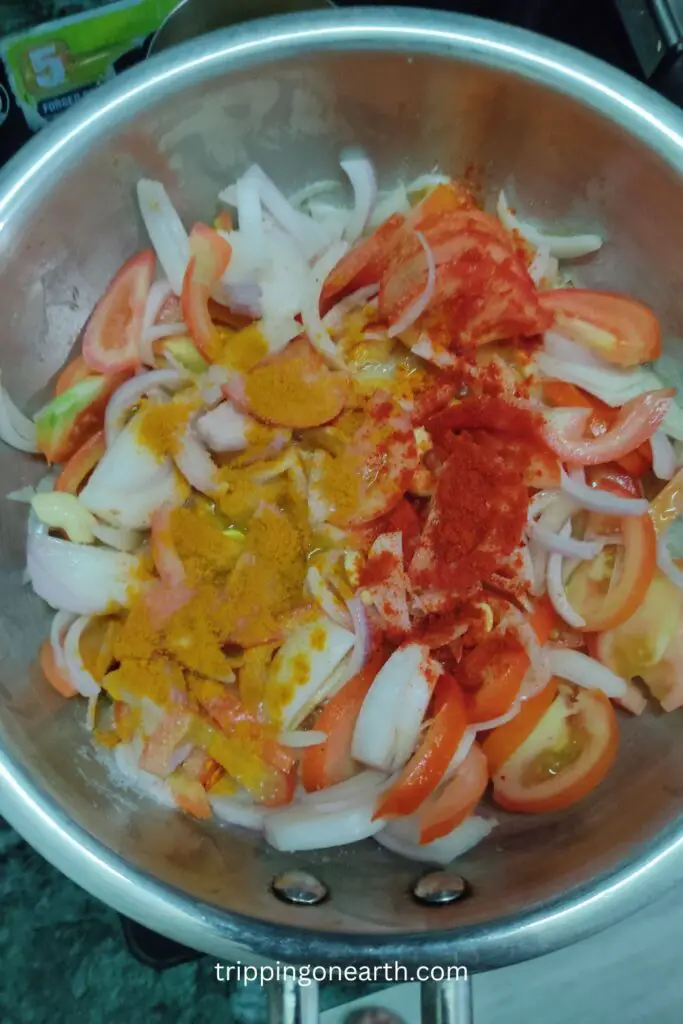
2. Now, add 100 ml water to the pan and give it a boil. Cover the lid of the pan and soak the onions and tomatoes on medium flame till they get mushy.
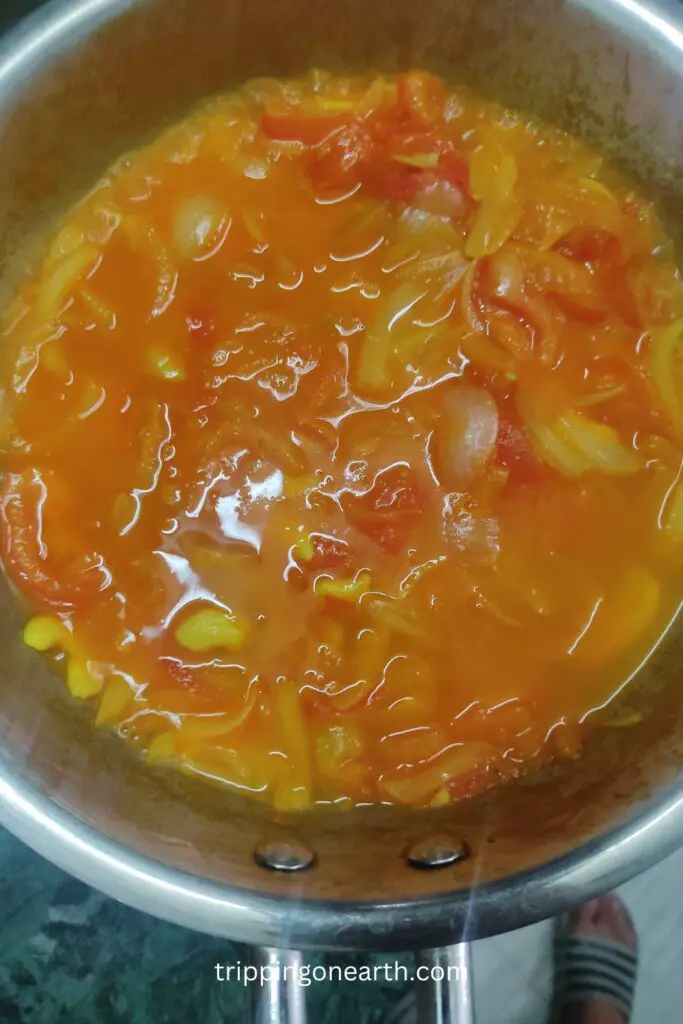
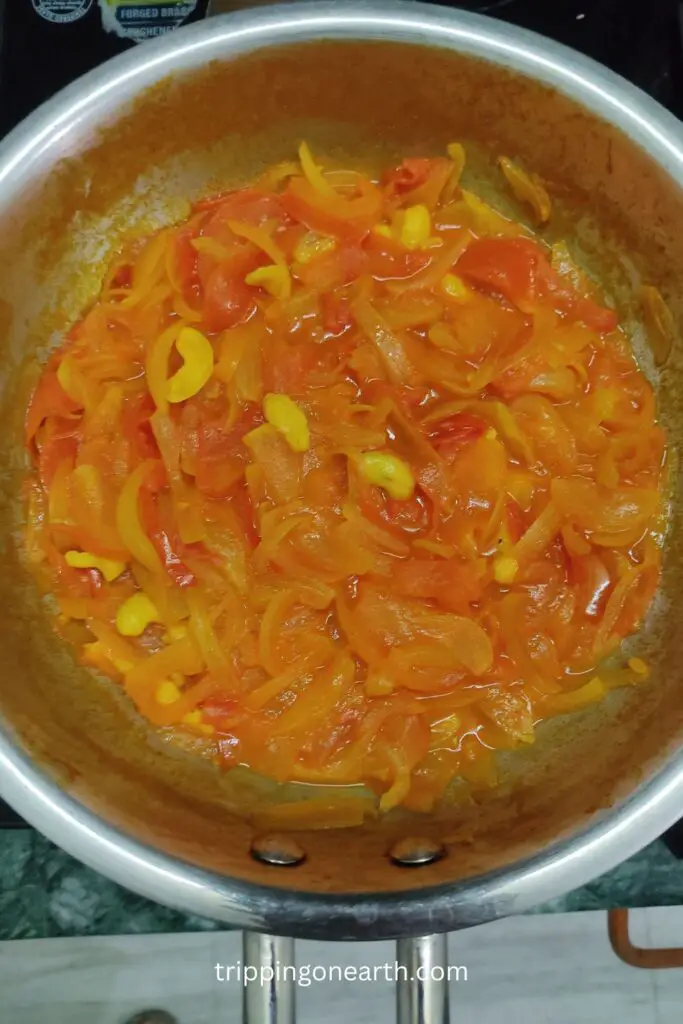
3. Set the onion tomato masala aside for 10 mins for it to cool down. Then transfer the masala to the grinding jar and make a paste out of it and strain it into a bowl to have a smooth gravy.
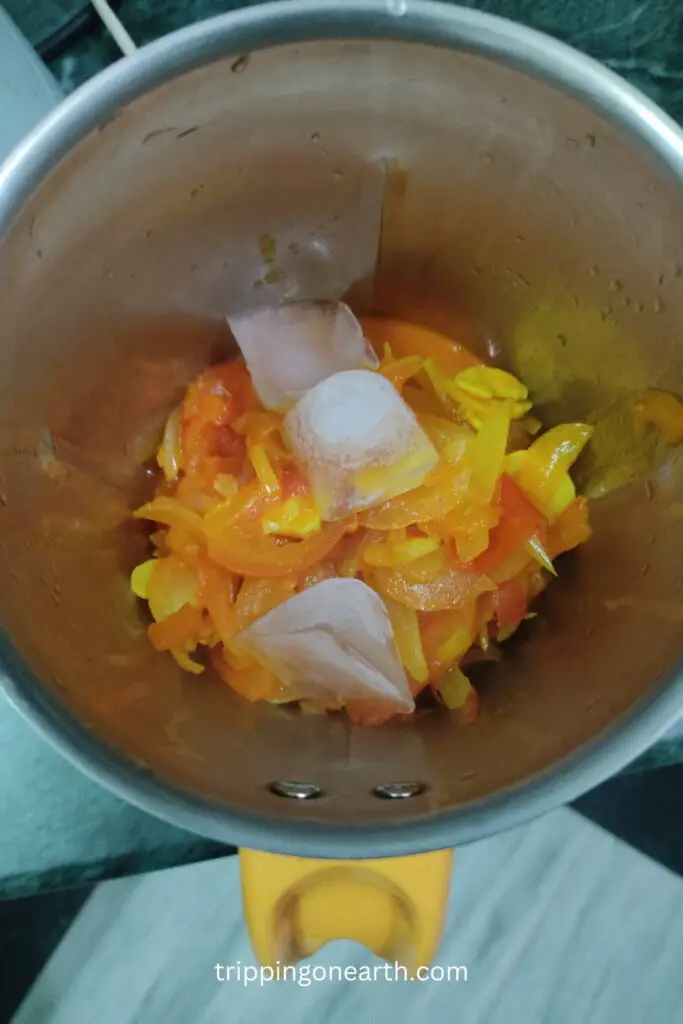
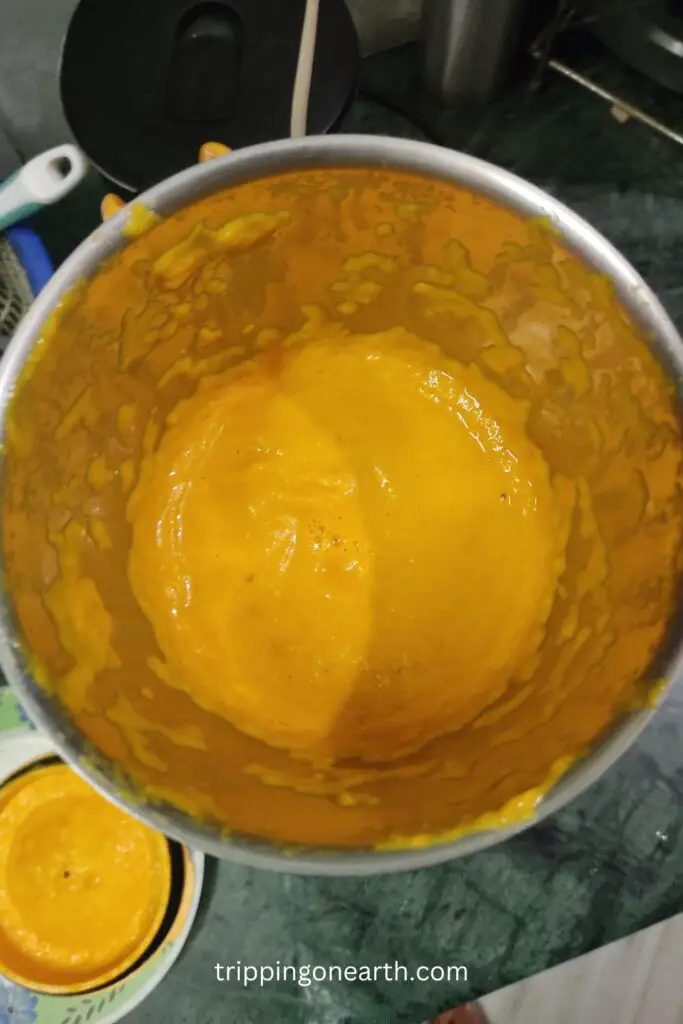
4. Heat the oil and butter in the skillet, and mix red chilli powder, turmeric powder, and coriander powder well. Make sure not to burn them.
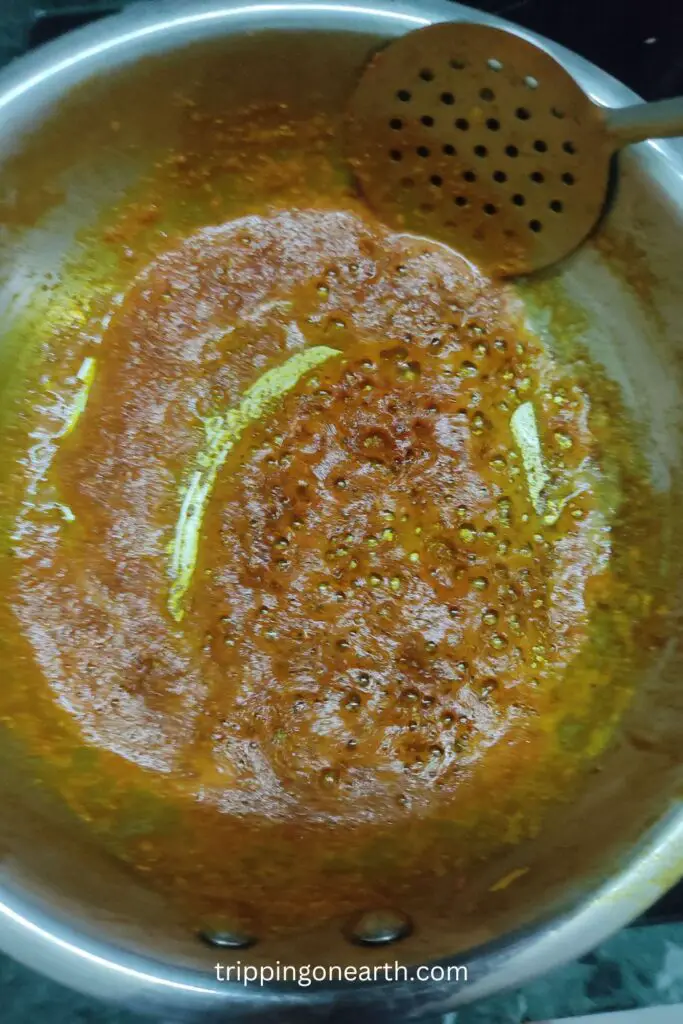
5. Now add the gravy to the spices and give it a stir.
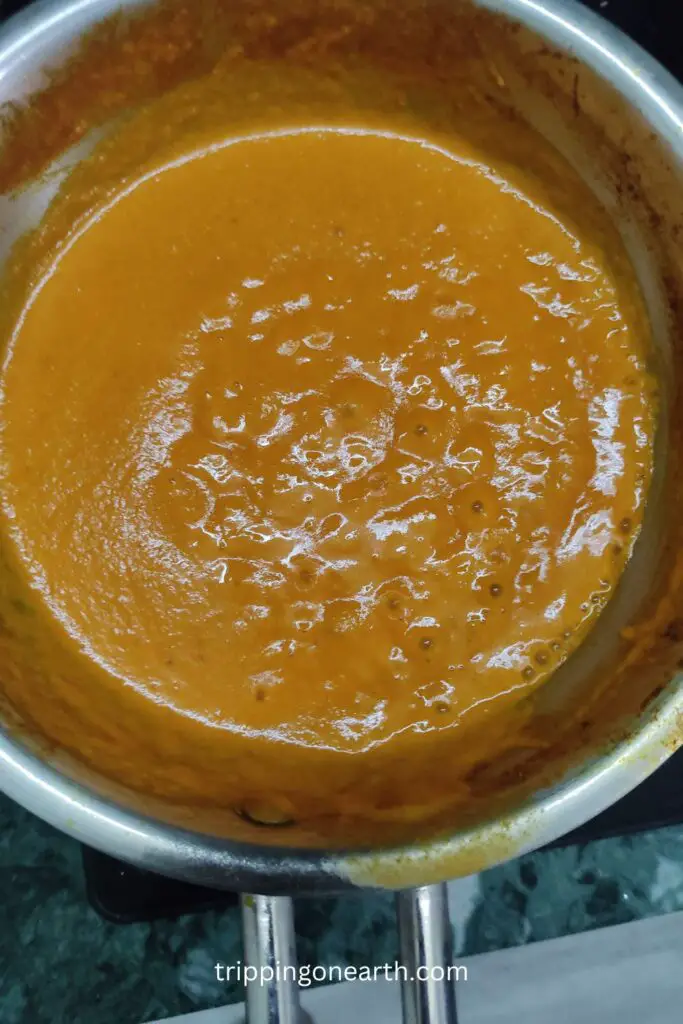
6. Add sugar, fenugreek leaves, and garam masala to the gravy and stir for 2 mins.
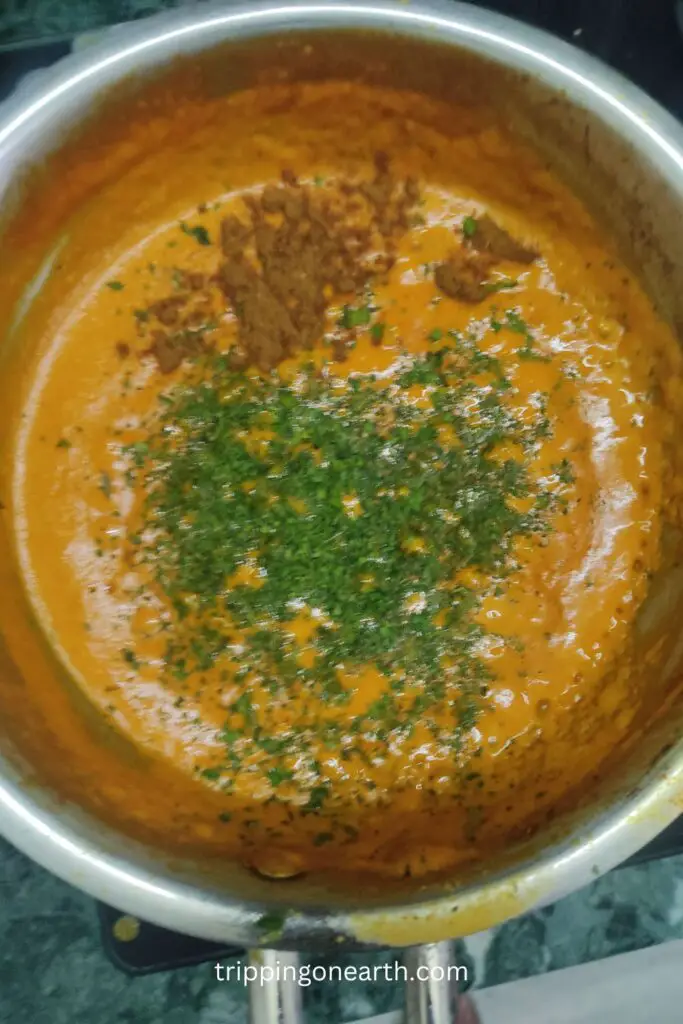
7. Add some milk for consistency in the gravy and add paneer and give it a nice stir.
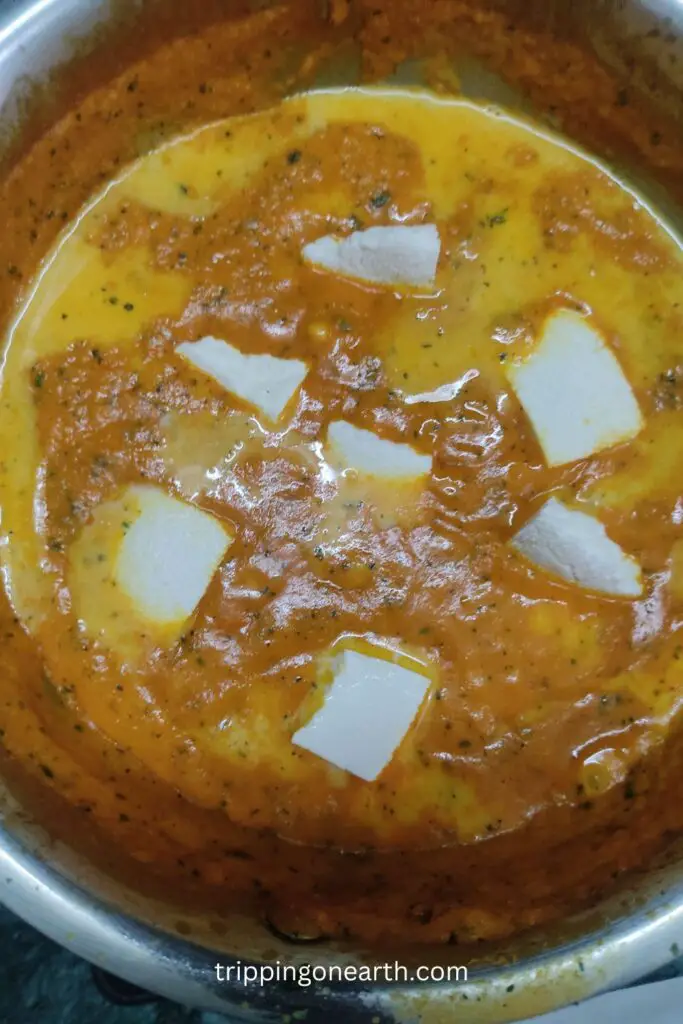
8. Your shahi paneer is ready to serve
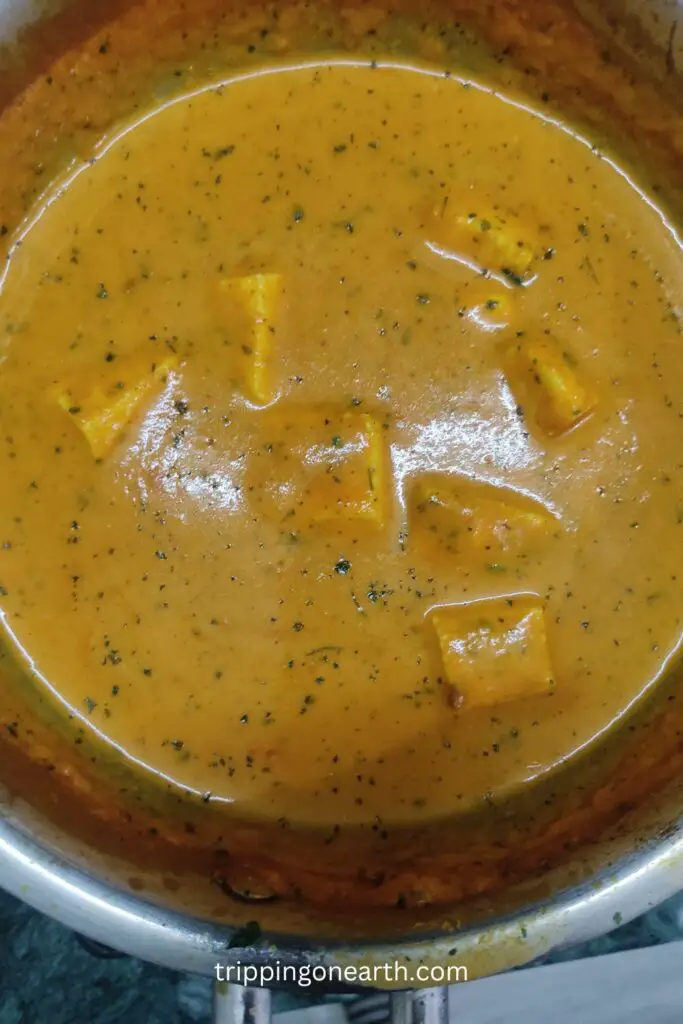
Tips & Tricks
- The dish is on the sweeter side is what makes it stand out, but you can always choose to not add any sweeteners.
- Add 3-4 cubes of ice to cool the gravy instantly.
- If you don’t have milk you can add water for consistency in the gravy also.
How to Serve
Shahi paneer is typically served with naan bread, roti, or paratha, or you can go with fragrant basmati rice. These complement the rich flavors of the dish and provide a satisfying meal.
I eat paneer with the bread and the leftover gravy with the rice.
It tastes so good!!
How to Store
It’s essential to properly store shahi paneer to preserve its flavor and freshness. Before putting shahi paneer in an airtight glass or food-grade plastic container, you should let it cool to room temperature first. The freezer or back of the shelf is often the coolest place in the refrigerator to keep the container.
For maximum quality, use the shahi paneer within three to four days; after that, it could lose flavor and texture. Transfer the shahi paneer to a saucepan or dish that can be heated in the microwave. Then, reheat it there while stirring regularly to keep it from burning or sticking to the bottom of the pan. Add more milk or cream to the shahi paneer if it seems too dry.
Nutrition
Here is a detailed breakdown of the nutrition information for shahi paneer:
Calories: A typical serving of shahi paneer contains approximately 350-400 calories. This can vary based on the recipe and serving size.
Protein: Shahi paneer is a high-protein dish, with each serving containing approximately 15-20 grams of protein. Paneer, the main ingredient in the dish, is a good source of protein, providing all the essential amino acids the body needs.
Fat: Shahi paneer is also high in fat, with each serving containing around 20-25 grams of fat. The fat comes from the use of oil or ghee in cooking and the cream is used to give the dish its rich, creamy texture.
Carbohydrates: Shahi paneer is a moderate source of carbohydrates, with each serving containing approximately 25-30 grams. The majority of the carbs come from the onion and tomato used in the dish, as well as from any additional vegetables or rice served alongside it.
Fiber: Shahi paneer is a good source of dietary fiber, with each serving containing approximately 3-4 grams. This can help promote healthy digestion and may also help regulate blood sugar levels.
Calcium: Shahi paneer is an excellent source of calcium, with each serving providing approximately 20-25% of the daily recommended intake. Calcium is essential for maintaining healthy bones and teeth and also plays a role in muscle function, nerve signaling, and other bodily processes.
Vitamins and Minerals: Shahi paneer is a good source of vitamin A and vitamin C, with each serving to provide approximately 15-20% of the daily recommended intake. Vitamin A is important for maintaining healthy vision, skin, and immune function. Vitamin C is an antioxidant that helps protect cells from damage and is also important for immune function and collagen synthesis.
It’s important to keep in mind that the exact nutrition information for shahi paneer may vary depending on the recipe used, the serving size, and the specific ingredients used. However, overall, shahi paneer can be a nutritious and satisfying dish when enjoyed as part of a balanced diet.
Why I like Shahi Paneer
- It is very rich and creamy.
- The sweetness of the dish gives a refreshing taste to your mouth.
More Paneer Recipes That You’ll Love
- How to Make Paneer Butter Masala (Restaurant Style)
- Paneer Bhurji (Easiest Paneer Recipe to Make!)
- Paneer Tikka Masala (Delicious and Easy to Make)
Please rate and comment if you make this shahi paneer so I know how much you like it.
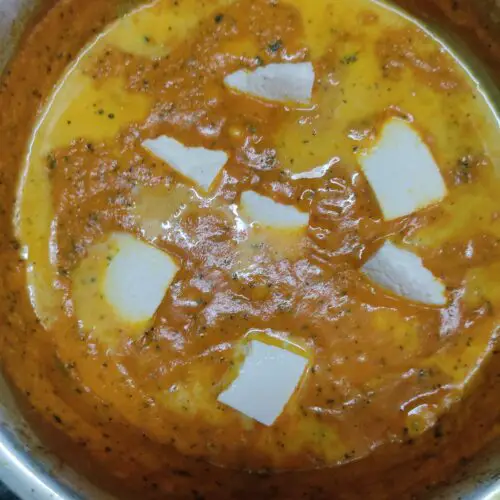
Shahi Paneer (Mughlai Paneer)
Equipment
- Deep frying pan
- Grinding jar
- Tablespoon/Ladle
Ingredients
For onion tomato puree
- 2 tbsp Butter
- 4 medium Tomatoes (sliced)
- 2 medium Onion (sliced)
- 10 nos. Cashew nuts
- 2 nos. Green chillies (chopped) (optional)
- ½ tsp Red chilli powder
- ¼ tsp Turmeric powder
- Salt to taste
For shahi paneer
- 200 gms Paneer
- 1 tsp Oil
- 1 tbsp Butter
- 1 tsp Red chilli powder
- ½ tsp Turmeric powder
- 1½ tsp Coriander powder
- Onion tomato puree
- 50 ml Milk
- ¼ tsp Sugar
- ½ tsp Garam masala
For garnishing
- Criander sprig
- 1 tsp Fenugreek leaves
- 1 tbsp Cream (Optional)
Instructions
- In a deep pan, heat the butter and add onions, tomatoes, and cashews and cook them till the smell and moisture of the tomatoes fade away. Add turmeric and red chilly powder and stir for 2 mins on low flame.
- Now, add 100 ml water to the pan and give it a boil. Cover the lid of the pan and soak the onions and tomatoes on medium flame till they get mushy.
- Set the onion tomato masala aside for 10 mins for it to cool down. Then transfer the masala to the grinding jar and make a paste out of it and strain it into a bowl to have a smooth gravy.
- Heat the oil and butter in the skillet, and mix red chilli powder, turmeric powder, and coriander powder well. Make sure not to burn them.
- Now add the gravy to the spices and give it a stir.
- Add sugar, fenugreek leaves, and garam masala to the gravy and stir for 2 mins.
- Add some milk for consistency in the gravy and add paneer and give it a nice stir.
- Your shahi paneer is ready to serve
Notes
- The dish is on the sweeter side is what makes it stand out, but you can always choose to not add any sweeteners.
- Add 3-4 cubes of ice to cool the gravy instantly.
- If you don’t have milk you can add water for consistency in the gravy also.
